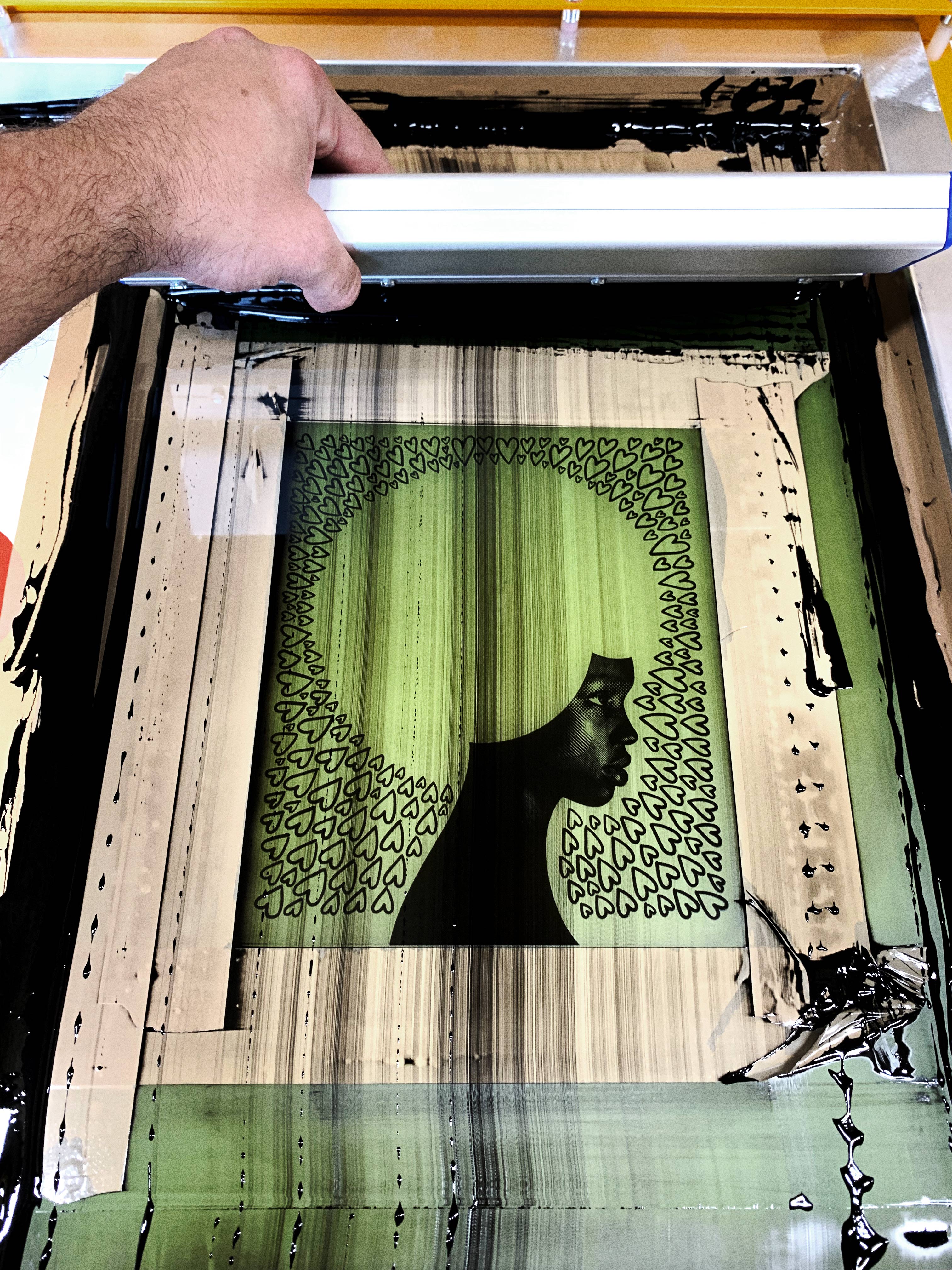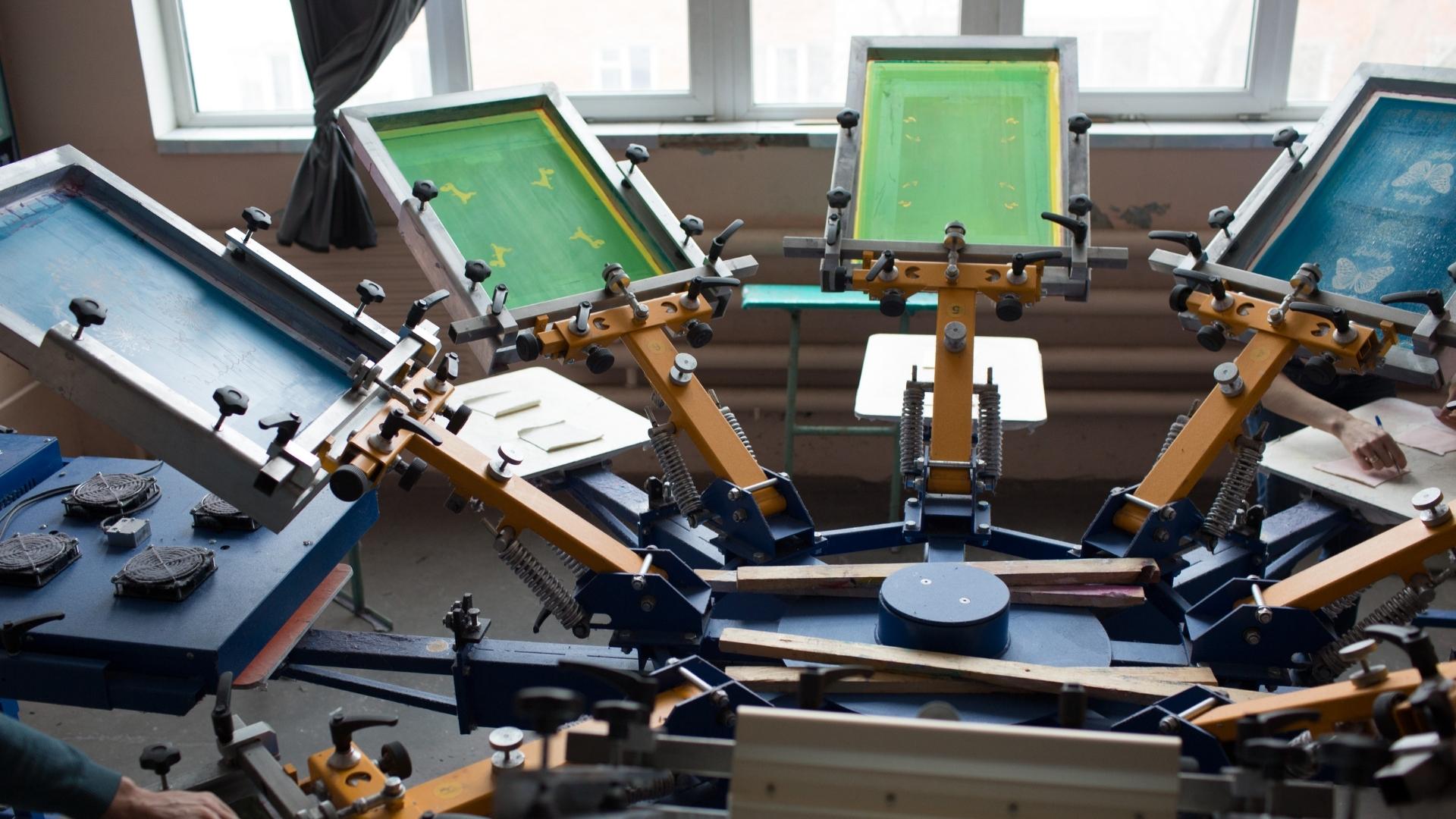ChatGPT said: 10:9 Design Embroidery success stories: how clients enhanced their brand identity
The Vital Guide to Recognizing Screen Printing and Its Versatile Utilizes
Screen printing has an abundant background that goes back to old times, developing right into an innovative method used throughout numerous markets today. This guide discovers the intricacies of the screen printing process, outlining its applications in home, style, and marketing decoration - 10:9 Design Screen Printing. Understanding these fundamentals can open up imaginative capacity for both industrial and creative projects. The complying with areas will certainly disclose necessary pointers and methods to improve one's screen printing ventures
The Background of Screen Printing
Although screen printing has roots that trace back centuries, its development mirrors the technical and imaginative improvements of various cultures. Coming from ancient China, the strategy was originally utilized for embellishing textiles and later infect Japan, where it ended up being essential to Ukiyo-e woodblock printing. The technique moved to Europe in the 18th century, where it acquired appeal amongst artisans and business printers. The invention of picture emulsion in the 20th century revolutionized screen printing, enabling even more intricate styles and greater efficiency. Artists like Andy Warhol better moved its appeal, utilizing the medium to create iconic jobs that blended commercialism and art. By the late 20th century, screen printing had developed itself as a functional method, used in vogue, advertising, and great art. Today, it remains to advance, integrating electronic modern technology and increasing its applications across different sectors.
The Screen Printing Process Explained
Screen printing transforms artistic visions into substantial layouts with a series of precise steps. A picture is produced and then moved onto a screen, generally made of great mesh fabric stretched over a structure. A light-sensitive emulsion is used to the screen, which is revealed to light, solidifying in locations not covered by the photo. After cleaning out the unhardened emulsion, a stencil is created.
Next off, the screen is positioned over the substratum, whether it be material, paper, or one more material. Ink is then pushed with the open locations of the stencil utilizing a squeegee, transferring the design onto the substrate below. This process can be duplicated for multiple shades, calling for different screens for each and every tone. Ultimately, the published product is treated making use of heat to guarantee the ink adheres correctly, causing a durable, vivid design ready for usage.
Sorts Of Screen Printing Techniques

In addition, specialty techniques, such as discharge screen printing, remove dye from the fabric to develop softer prints, while foil screen printing uses metal foil to achieve a shiny coating (10:9 Design near me). Each technique uses distinct attributes, accommodating numerous innovative needs and production ranges, eventually broadening the possibilities within the this contact form screen printing domain
Applications of Screen Printing in Various Industries

Furthermore, the signs and marketing sectors use screen printing for creating eye-catching display screens and banners. This approach enables strong shades and elaborate styles that catch interest. In electronic devices, screen printing is employed for applying conductive inks to circuit boards, vital for part links. In addition, the home design market welcomes screen printing to produce distinctive designs on fabrics and wall art. In general, screen printing functions as a critical device across varied fields, improving Visit Your URL products with personalized and aesthetically enticing graphics.
Tips for Successful Screen Printing Projects
While taking on a screen printing job, cautious interest to detail can significantly improve the last result. Initially, picking premium products is important; this consists of the screen, inks, and substratums. Using suitable mesh counts can influence ink deposition and information resolution. Preparation is equally essential; extensive cleansing of displays and appropriate direct exposure times guarantee crisp prints.
Next, precise enrollment is essential for multi-color prints. Using positioning devices can aid attain precise layering. Furthermore, testing prints on scrap materials prior to manufacturing assists determine prospective concerns without wasting resources.

Regularly Asked Questions
What Materials Are Best for Screen Printing on Fabric?
Cotton and polyester blends are perfect for screen printing on textile because of their resilience and ink absorption. In addition, specialty textiles like silk or canvas can create one-of-a-kind appearances and finishes, improving the general layout top quality.
How Do I Clean and Maintain Screen Printing Tools?
To keep and clean up screen printing tools, one must routinely clean displays with proper solvents, examine squeegees for wear, oil relocating components, and shop all things in a completely dry, dust-free setting to prolong their life expectancy.
What Are the Ecological Impacts of Screen Printing?
Screen printing can have substantial ecological influences, consisting of chemical waste from solvents and inks, water use throughout cleaning procedures, and energy intake. Lasting practices and environment-friendly materials are essential for minimizing these adverse effects.
Can Screen Printing Be Done in the house Efficiently?
Screen printing can be efficiently done at check it out home with the appropriate materials and strategies. Hobbyists can create quality prints, though success depends on their ability level, equipment, and understanding of the process involved.
What Are the Expenses Associated With Beginning a Screen Printing Company?

Starting a screen printing business entails costs for tools, materials, and office. First expenses normally vary from a couple of hundred to numerous thousand bucks, relying on the scale, quality of machinery, and desired production capability.
Screen printing has a rich background that dates back to old times, developing into an advanced technique utilized throughout various industries today. Another technique, rotating screen printing, uses cylindrical displays, helping with continual printing on fabric rolls, consequently boosting effectiveness for large manufacturings. In addition, specialty strategies, such as discharge screen printing, eliminate color from the textile to create softer prints, while foil screen printing applies metallic aluminum foil to attain a shiny finish. In the fashion market, screen printing is extensively made use of to produce dynamic styles on clothing, enabling brand names to display their distinct designs. Cotton and polyester blends are ideal for screen printing on textile due to their sturdiness and ink absorption.